388 low relevance results shown for 'End'. Prev |1|2|3|4|5|6|7|8|9|10|11|12|13|14|15|16 | Next | View 100 per page
Showing low relevance matches only. Return to normal search results
Forces and Moving - The way objects move depends on a variety of factors including their size and shape ACSSU073 Year 4 Biological Sciences
Animal Survival - Living things, including plants and animals, depend on each other and the environment to survive ACSSU175 Year 9 Biological Sciences
Organ Systems - Multi-cellular organisms rely on coordinated and interdependent internal systems to respond to changes to their environment ACSSU176 Year 9 Biological Sciences
Ecology - Ecosystems consist of communities of interdependent organisms and abiotic components of the environment; matter and energy flow through these systems ACSBL046 Year 11 Cells and multicellular organism
Cells as the basis of life - Movement of materials across membranes occurs via diffusion, osmosis, active transport and/or endocytosis ACSCH016 Year 11 Chemical fundamentals
Properties and structure of atoms - Trends in the observable properties of elements are evident in periods and groups in the periodic table ACSCH025 Year 11 Chemical fundamentals
Properties and structure of materials - Materials are either pure substances with distinct measurable properties (for example, melting and boiling point, reactivity, strength, density) or mixtures with properties dependent on the identity and relative amounts of the substances that make up the ACSCH030 Year 11 Chemical fundamentals
Properties and structure of materials - Ions are atoms or groups of atoms that are electrically charged due to an imbalance in the number of electrons and protons; ions are represented by formulae which include the number of constituent atoms and the charge of the ion (for example, O2–, SO42–) ACSCH032 Year 11 Chemical fundamentals
Properties and structure of materials - The characteristic properties of metals (for example, malleability, thermal conductivity, electrical conductivity) are explained by modelling metallic bonding as a regular arrangement of positive ions (cations) made stable by electrostatic forces of attra ACSCH037 Year 11 Chemical fundamentals
Chemical reactions - Endothermic and exothermic reactions can be explained in terms of the Law of Conservation of Energy and the breaking and reforming of bonds; heat energy released or absorbed can be represented in thermochemical equations ACSCH066 Year 11 Molecular interactions and reactions
Aqueous solutions and acidity - The pH scale is used to compare the levels of acidity or alkalinity of aqueous solutions; the pH is dependent on the concentration of hydrogen ions in the solution ACSCH097 Year 12 Equilibrium acids and redox reactions
Chemical equilibrium systems - Acids are substances that can act as proton (hydrogen ion) donors and can be classified as monoprotic or polyprotic depending on the number of protons donated by each molecule of the acid ACSCH102 Year 12 Equilibrium acids and redox reactions
Chemical equilibrium systems - Volumetric analysis methods involving acidbase reactions rely on the identification of an equivalence point by measuring the associated change in pH, using chemical indicators or pH meters, to reveal an observable end point ACSPH099 Year 12 Gravity and electromagnetism
Gravity and motion - Projectile motion can be analysed quantitatively by treating the horizontal and vertical components of the motion independently ACSPH100 Year 12 Gravity and electromagnetism
Gravity and motion - When an object experiences a net force of constant magnitude perpendicular to its velocity, it will undergo uniform circular motion, including circular motion on a horizontal plane and around a banked track ACSPH098 Year 12 Gravity and electromagnetism
Gravity and motion - The vector nature of the gravitational force can be used to analyse motion on inclined planes by considering the components of the gravitational force (that is, weight) parallel and perpendicular to the plane
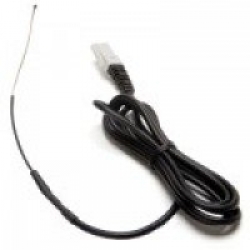
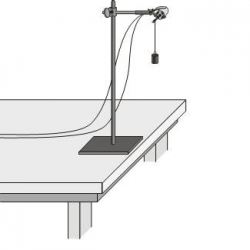
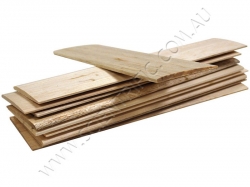
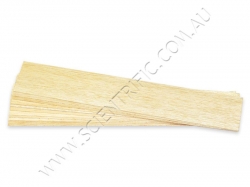
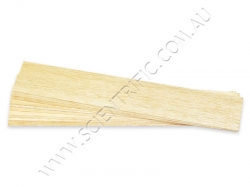
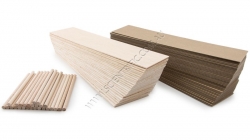
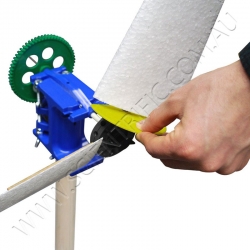
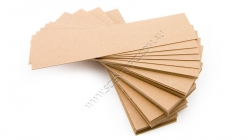
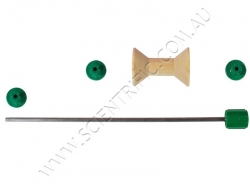
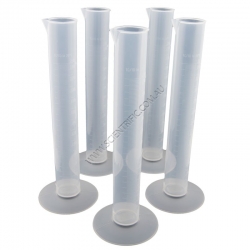

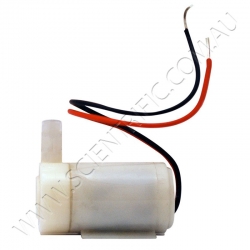
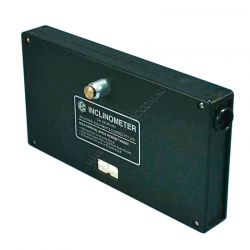
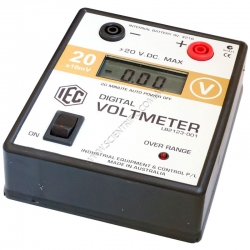
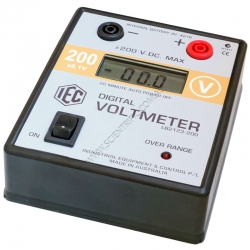
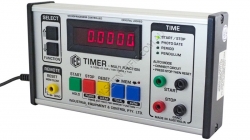
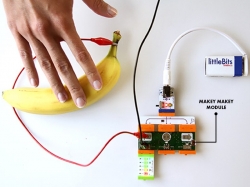

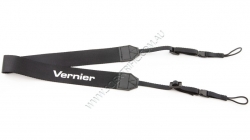
388 low relevance results shown for 'End'. Prev |1|2|3|4|5|6|7|8|9|10|11|12|13|14|15|16 | Next | View 100 per page
Showing low relevance matches only. Return to normal search results
Curriculum resources related to 'End'
ACSSU005 Foundation Physical SciencesForces and Moving - The way objects move depends on a variety of factors including their size and shape ACSSU073 Year 4 Biological Sciences
Animal Survival - Living things, including plants and animals, depend on each other and the environment to survive ACSSU175 Year 9 Biological Sciences
Organ Systems - Multi-cellular organisms rely on coordinated and interdependent internal systems to respond to changes to their environment ACSSU176 Year 9 Biological Sciences
Ecology - Ecosystems consist of communities of interdependent organisms and abiotic components of the environment; matter and energy flow through these systems ACSBL046 Year 11 Cells and multicellular organism
Cells as the basis of life - Movement of materials across membranes occurs via diffusion, osmosis, active transport and/or endocytosis ACSCH016 Year 11 Chemical fundamentals
Properties and structure of atoms - Trends in the observable properties of elements are evident in periods and groups in the periodic table ACSCH025 Year 11 Chemical fundamentals
Properties and structure of materials - Materials are either pure substances with distinct measurable properties (for example, melting and boiling point, reactivity, strength, density) or mixtures with properties dependent on the identity and relative amounts of the substances that make up the ACSCH030 Year 11 Chemical fundamentals
Properties and structure of materials - Ions are atoms or groups of atoms that are electrically charged due to an imbalance in the number of electrons and protons; ions are represented by formulae which include the number of constituent atoms and the charge of the ion (for example, O2–, SO42–) ACSCH032 Year 11 Chemical fundamentals
Properties and structure of materials - The characteristic properties of metals (for example, malleability, thermal conductivity, electrical conductivity) are explained by modelling metallic bonding as a regular arrangement of positive ions (cations) made stable by electrostatic forces of attra ACSCH037 Year 11 Chemical fundamentals
Chemical reactions - Endothermic and exothermic reactions can be explained in terms of the Law of Conservation of Energy and the breaking and reforming of bonds; heat energy released or absorbed can be represented in thermochemical equations ACSCH066 Year 11 Molecular interactions and reactions
Aqueous solutions and acidity - The pH scale is used to compare the levels of acidity or alkalinity of aqueous solutions; the pH is dependent on the concentration of hydrogen ions in the solution ACSCH097 Year 12 Equilibrium acids and redox reactions
Chemical equilibrium systems - Acids are substances that can act as proton (hydrogen ion) donors and can be classified as monoprotic or polyprotic depending on the number of protons donated by each molecule of the acid ACSCH102 Year 12 Equilibrium acids and redox reactions
Chemical equilibrium systems - Volumetric analysis methods involving acidbase reactions rely on the identification of an equivalence point by measuring the associated change in pH, using chemical indicators or pH meters, to reveal an observable end point ACSPH099 Year 12 Gravity and electromagnetism
Gravity and motion - Projectile motion can be analysed quantitatively by treating the horizontal and vertical components of the motion independently ACSPH100 Year 12 Gravity and electromagnetism
Gravity and motion - When an object experiences a net force of constant magnitude perpendicular to its velocity, it will undergo uniform circular motion, including circular motion on a horizontal plane and around a banked track ACSPH098 Year 12 Gravity and electromagnetism
Gravity and motion - The vector nature of the gravitational force can be used to analyse motion on inclined planes by considering the components of the gravitational force (that is, weight) parallel and perpendicular to the plane
Products related to 'End'

Key Experiment Effect of Vascularity on Skin Temperature
This investigation compares rates of recovery between two different skin regions and correlates rate of recovery with vascularity.
Description
KEBS6A explores vascularity for different skin regions based on skin temperature recovery rates.
Principle
Human sk...
Order code: KEBS6A
Key Experiment Rates of Chemical Reactions
KESC13: Determine the reaction rate for the decomposition of hydrogen peroxide or the reaction between citric acid and bicarbonate of soda.
Curriculum Topics
Chemistry: Chemical reactions: reactants, products and energy change
Chemistry: Rates of chemical react...
Order code: KECS13
Key Experiment Forensic Food Dye Tests
KECS9B: Forensic analysis of food dyes can be used to determine the mix of coloured substances in certain food drinks such as sports drinks.
Curriculum Topics
Chemistry: Properties and structure of materials
Chemistry: Properties of pure substances and mixtures...
Order code: KECS9B

Key Experiment Electrical Energy and Power
This key experiment enables the calculation of power of a small electric motor as it raises a mass.
Curriculum Topics
o Electrical circuits
o Energy and power
Description
In this experiment, you will study a small, inexpensive electric motor used as a crude...
Order code: KEPS20A
Key Experiment Electrical Energy Convertors
This key experiment uses data technology to measure the energy conversion of a range of energy convertors. Wind, solar or fuel cell devices are explored.
Description
With the approach and the probes described you can measure voltage and current output for any electrica...
Order code: KEPS20B
Key Experiment Electromagnetic Induction
KEPS31: Investigate principles of electromagnetic induction (including Lenz’s Law) in solid metal rings and coils of wire
Curriculum Topics
Physics: Electromagnetism and induction
Physics: Linear motion and force
Physics: Gravity and motion
Description
Order code: KEPS31

KidWind Airfoil Balsa Blade Sheets - 10 pack
KIDWIND AIRFOIL BALSA BLADE SHEETS 10 PACK
This balsa is pre-shaped in an airfoil shape. Real wind turbine blades use this airfoil shape to generate lift and reduce drag, making for highly efficient rotors.
Experiment with advanced blade designs and explore Bernoulli’s P...
Order code: KW-ABBS10


KidWind Balsa Blade Sheets 100 Pack
KIDWIND BALSA BLADE SHEETS 100 PACK
Balsa wood is very lightweight, stiff and easy to cut, carve and shape. It is perfect for making experimental wind turbine blades. In fact, some real wind turbine blades use balsa wood "skeletons" inside fiberglass!
Check out the KW-...
Order code: KW-BB100


KidWind Balsa Blade Sheets 10 Pack
KIDWIND BALSA BLADE SHEETS 10 PACK
Balsa wood is very lightweight, stiff and easy to cut, carve and shape. It is perfect for making experimental wind turbine blades. In fact, some real wind turbine blades use balsa wood "skeletons" inside fiberglass!
Check out the KW-A...
Order code: KW-BBS10


KidWind Blade Design Consumables
KIDWIND BLADE DESIGN CONSUMABLES
This pack contains the major consumable materials used for wind turbine blade design experiments. It features two blade-making materials: balsa wood and cardboard sheets. Both materials are light and rigid but have different properties tha...
Order code: KW-BDC

KidWind Blade Pitch Protractor
KIDWIND BLADE PITCH PROTRACTOR
This tool is incredibly helpful for measuring the blade pitch angle on your KidWind turbine. This tool invented by KidWind WindSenator Niels Anderson makes blade pitch experiments much easier!
The Blade Pitch Protractor has a cut-out notc...
Order code: KW-BPP


Vernier Cardboard Sheets - 50 Pack
VERNIER CARDBOARD SHEETS - 50 PACK.
Cardboard is a great material used to make simple wind turbine blades, it is stiff, easy to cut, lightweight, low cost and recyclable.
Each package comes with 50 chipboard sheets that are 75x300mm. Each sheet is approximately 1.5 mm ...
Order code: KW-CB50

KidWind Drivetrain Set
KIDWIND DRIVETRAIN SET
Connect a wind turbine hub to a nacelle with a drivetrain set.
The KidWind Drivetrain Set features the hex driveshaft, Hub Quick Connect, hex locks and wooden spool used in the KW-AWX Advanced Wind Experiment Kit. These materials can be very helpfu...
Order code: KW-DS

KidWind Graduated Cylinder - 5 Pack
KIDWIND GRADUATED CYLINDER 5 PACK
This is a set of five 250 mL plastic graduated cylinders with a hole drilled in the wall near the bottom to accommodate a plastic hose (not included). Intended for use with the KidWind Small Water Pump with Tubing.
Order code: KW-GCYL5

KidWind Nacelle
KIDWIND NACELLE
Build your own wind turbine and use the KidWind Nacelle to hold the generator (motor). Build a complete turbine by making your own tower and base with PVC pipe (from a hardware store) or use the KW-TBS KidWind Tower and Base Set. You will also need a gener...
Order code: KW-NAC

KidWind Mini Water Pump with Tubing
KIDWIND MINI WATER PUMP WITH TUBING
The KidWind low voltage water pump with tubing is a great way to demonstrate and make visible, power output from KidWind wind and solar kits. It makes comparing different turbine designs easy; simply measure how high different turbines ...
Order code: KW-PUMP

IEC Inclinometer Clinometer Simple
IEC INCLINOMETER OR CLINOMETER
The IEC Inclinometer, sometimes called a clinometer, is a simple and self-contained device for measuring the angle of incline or decline from the observer to an object. The observer looks through the viewing tube and places the object in the...
Order code: LB1950-001

IEC Digital Volt Meter 20V DC
IEC DIGITAL VOLTMETER 20V DC
An Australian made DC Voltmeter designed to be virtually indestructible in the classroom. There are no knobs, switches or fuses to replace. Powered by a standard 9V battery, easy to change when required, a "LO BATT" alarm displays well before ...
Order code: LB2123-001

IEC Digital Volt Meter 200V DC
IEC DIGITAL VOLTMETER 20V DC
An Australian made DC Voltmeter designed to be virtually indestructible in the classroom. There are no knobs, switches or fuses to replace. Powered by a standard 9V battery, easy to change when required, a "LO BATT" alarm displays well before ...
Order code: LB2123-200
IEC Timer/Counter/Frequency 20 Space Memory 12V
IEC TIMER/COUNTER/FREQUENCY 12V
A versatile, compact and powerful IEC Timer-Counter/Frequency instrument that runs from a 240/12V AC plug pack for general laboratory timing to 0.1mS, counting and measuring frequency or rate. It does not perform Geiger Counting.
With a ...
Order code: LB4063-001
IEC Timer/Counter/Frequency 20 Space Memory 240V
IEC TIMER/COUNTER/FREQUENCY 240V
A versatile, compact and powerful IEC Timer-Counter/Frequency instrument that runs from 240V AC mains power for general laboratory timing to 0.1mS, counting and measuring frequency or rate. It does not perform Geiger Counting.
With a br...
Order code: LB4063-101

IEC Timer LED 6 Digit 999.999Sx0.1ms 12V AC/DC Plug-Pack
IEC MULTI FUNCTION TIMER 12V
This versatile compact low voltage multi function Timer is designed for general purpose timing in the laboratory and and is run by 240/12V AC PlugPak (not supplied). It does not have a power outlet for photogates and it cannot control the IEC ...
Order code: LB4064-001

littleBits Makey Makey Module
The LITTLEBITS MAKEY MAKEY MODULE allows you to make a touch-pad out of anything by attaching alligator clip leads to the littleBits Makey Makey module and other objects, for example, you and a banana. When you touch the banana, you complete the connection and the littleBits Make...
Order code: LBMMM

Vernier LabQuest Viewer Software Electronic Version
VERNIER LABQUEST VIEWER ELECTRONIC EDITION:
LabQuest Viewer is available as a download. Purchase this downloadable version and we will send you a link after we have processed your order.
LabQuest Viewer software allows you to view and control the LabQuest wirelessly fr...
Order code: LQ-VIEW-E

Vernier LabQuest 3 Lanyard
VERNIER LABQUEST 3 LANYARD
A highly recommended accessory when using Vernier's LabQuest 3 outdoors, particularly in wet areas as the LabQuest 3 is splash resistant but not waterproof.
The lanyard works as a neck strap to prevent accidental drops while doing field studies...
Order code: LQ3-LAN
388 low relevance results shown for 'End'. Prev |1|2|3|4|5|6|7|8|9|10|11|12|13|14|15|16 | Next | View 100 per page



 ,
,